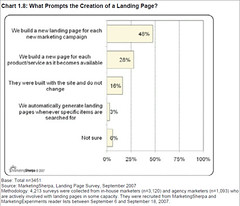What are Purpose-built Del.icio.us Pages, and How are They Used?
Purpose-built del.icio.us pages are nothing more than a collection of Web sites and blog posts that you save in the social bookmarking site del.icio.us using a specific tag. These “pages” can offer you, your book, or your business a way to showcase groups of links to sites that are relevant to your message in a “social” space. In other words, other users have also saved, tagged, and commented on these same links, giving them more credibility.
By definition, del.icio.us is a social bookmarking site that allows you to save your favorite Web sites and blogs, comment on them, tag them, and share them with others.
When you create your del.icio.us account, the link to your page will look something like this: http://del.icio.us/your.account, where “your.account” is the username you choose when you initially create your account.
When you add sites to your account, you will enter the URL, a description, and a series of tags. These tags are what allow us to create “purpose-built del.icio.us pages.”
For every site you “tag” with a certain term, a link is created that looks like this:
http://del.icio.us/your.account/tag
Now you have a link to all of the sites you have saved and “tagged” with that particular term. These are purpose-built del.icio.us pages.
So, rather than tagging your favorite sites blindly, think about how you might tag them intentionally to create your own purpose-built pages that will contain a collection of related sites. For instance, you could create links to several pages like this:
del.icio.us/your.account (link to main page) del.icio.us/your.account/public.relations del.icio.us/your.account/client.name del.icio.us/your.account/competition del.icio.us/your.account/book.title del.icio.us/your.account/author.name
Now, you may ask, what are these pages good for? The best way to answer that question is with an example…
Here is a link to Dalton Publishing’s del.icio.us page: http://del.icio.us/dalton.publishing
The page may seem to be a hodge-podge of links, but by using their tags wisely, Dalton Publishing utilizes the purpose-built pages that are generated from their account.
For example, on each social media newsroom that they create for their authors, Dalton Publishing provides a link to the relevant purpose-built pages for the particular author and/or book:
This purpose-built page: http://del.icio.us/dalton.publishing/puresoapbox on this author’s newsroom: http://www.puresoapboxnewsroom.com
This purpose-built page: http://del.icio.us/dalton.publishing/joeoconnell on this author’s newsroom: http://joeoconnellnewsroom.com/
This purpose-built page: http://del.icio.us/dalton.publishing/robertstikmanz on this author’s newsroom: http://www.hiddenlandsofnodnewsroom.com
So, for example, when a visitor clicks on the “puresoapbox” del.icio.us page (http://del.icio.us/dalton.publishing/puresoapbox) from that author’s newsroom, he will be taken to a list of saved sites in Dalton Publishing’s del.icio.us account that have been tagged with the term “puresoapbox.” The same is true for the author terms “joeoconnell” and “robertstikmanz.”
Dalton Publishing also uses purpose-built del.icio.us pages in the body of their social media news releases like these:
http://owenegertonnewsroom.com/?p=54
http://joeoconnellnewsroom.com/?p=21
And, one way that all of Dalton Publishing’s authors could also take advantage of these “pages” is by simply adding the links to their own sites and blogs.
The above example demonstrates how a publishing company might use purpose-built pages; however, the way you use such pages will depend on your industry. Brand-conscious companies might want to save and tag sites or blog posts that demonstrate their brand awareness, where service companies might want to create pages that list specific news coverage, or even pages listing discussions about their competition.
Deltina Hay is the principal of Social Media Power, a Web 2.0 development firm in Austin. Ms. Hay’s graduate education in computer science, applied mathematics, and psychology led her naturally to social media consulting. Find out more about using social media and Web 2.0 tools from her new straight forward, easy-to-follow e-book on social media marketing and Web 2.0.
Article from articlesbase.com
How To Create iPhone Apps With No Programming Experience
Discover how to create iPhone apps easily with no programming experienced required. Learn from some of the top iPhone app developers to get your app created now.
How To Create iPhone Apps With No Programming Experience
Question by fatmac6113: Why do people slice up images created in Adobe Photoshop CS3 or Illustrator for web pages?
I am a college student. My focus is web design. I have been building pages using Abode Dreamweaver CS3 for quite some time now. Now we are about to get into the chapters about building a web page using Adobe Photoshop CS3 and Adobe Illustrator CS3. I have already used Adobe Illustrator CS3 to design the actual page. Now I need to what is the significance in slicing up the design after I have created it. Can someone please help me??????
Best answer:
Answer by Ryan
Slicing basically splits up the images for you. Most people draw their layout and it’s 1 big flat image, but when you slice it, you can export it so the sliced parts will save as separate images.
I draw my layouts in photoshop, then export it to image ready, then slice them in image ready, then export as images and html.
What do you think? Answer below!

